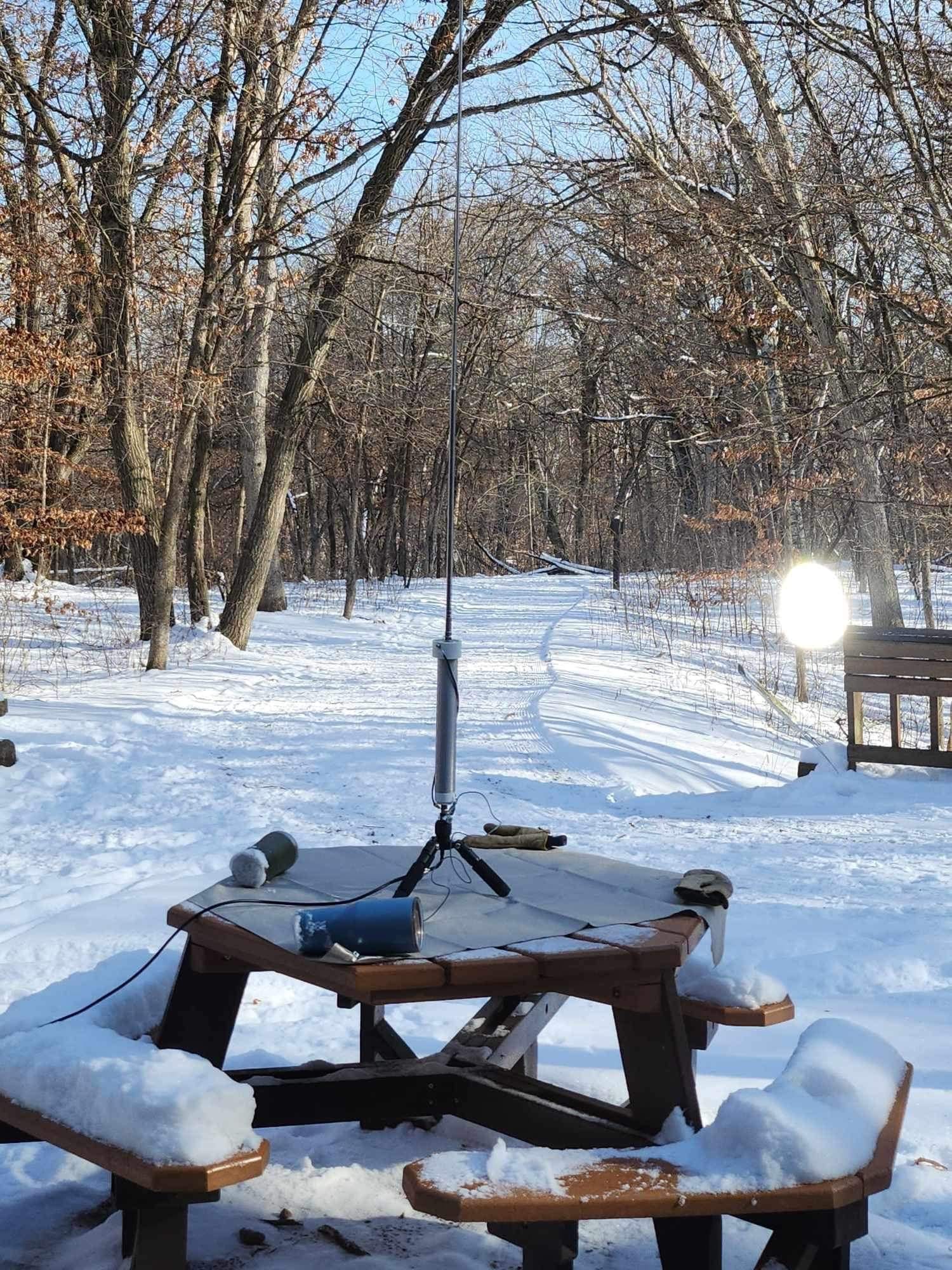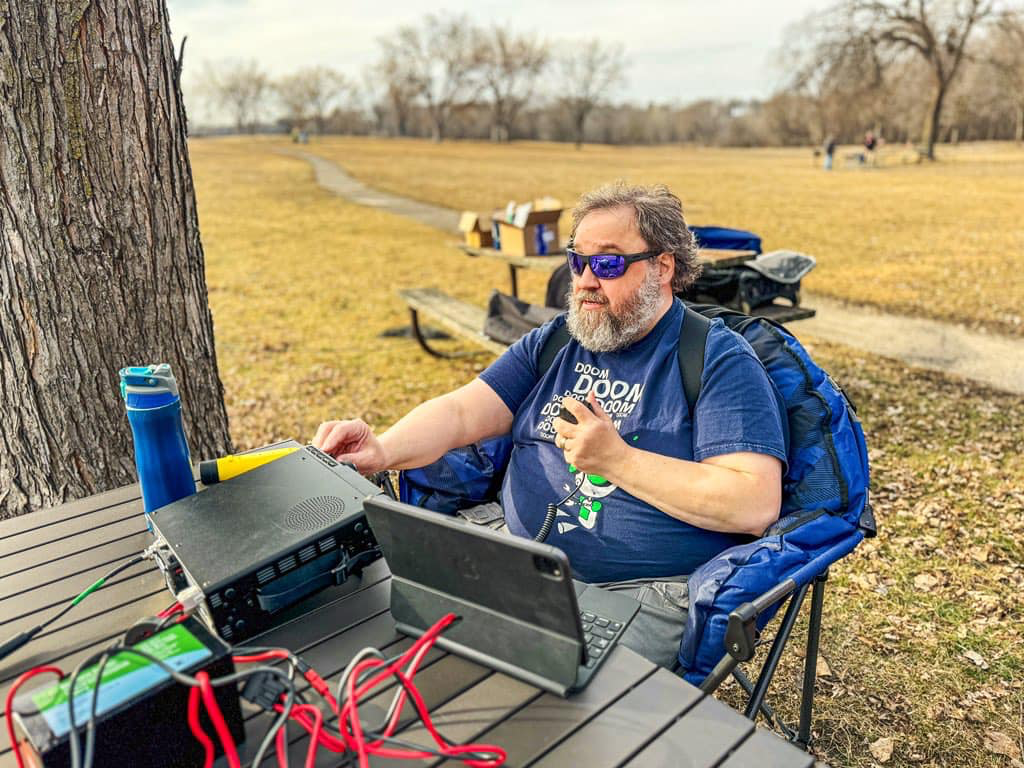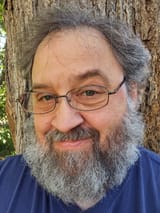Radio Ramblings: The HF Journey, Part 3 (5 March 2024 CE)
I've been getting a fair chunk of radio time, the last couple of weeks, but I keep not sitting down to write about it. This does not so much represent not having things to say about it, but rather, that I'm still in the depths of the obsession to the point where finding time to write about it, instead of chatting on Discord about it, watching YouTube about it, or actually doing it, has required a conscious effort!
Extra, Extra, Read All About It
That obsession has carried me over the threshold to acquiring my Amateur Extra Class license. It's an absurd name for the highest available class of amateur radio privileges, but there we are. As of 27 February, I'm not just extra, I'm officially extra.
This was not my original plan. Originally, I expected to get my Technician license (tested mid-December, licensed 30 December), then get some practical experience while slowly reading up on General, test for General in a leisurely fashion when I felt good and ready, and let Extra wait a while.
Of course, y'all already know it didn't happen that way. I tested for General three weeks after getting my Technician, and it was only a slightly longer to get ready for Amateur Extra.
So, what does that mean? It means that I have permission to do anything defined as part of the amateur service by FCC Part 97 (no, I do not expect you to go read a federal regulation randomly, but I figured if I did not include the link, someone would ask).
Did I need that extra (pun intended) privilege, right now? Probably not. It was all about leveraging how my brain was working.
Festival!
The day after my last post, I went to my first Hamfest, up in St. Cloud. It was a small affair, and wound down by noon, which surprised me a bit. Other things about it fit what I'd heard. A great deal of it was basically a swap-meet. There is a huge secondary market for radio equipment, much of which holds its value for years, especially compared to other endeavors, like computers. I went more to learn than to buy, but I did get a sense for the kinds of things that might be available at future events.
Where the event was more valuable to me was making some social connections. I arrived about the same time as my friend Alexis (KFØOOD, having gotten her paperwork in just a bit ahead of me apparently!) We wandered the tables together, went to a class on Parks on the Air, and then met up with some more of the Twin Cities Metro hams, along with Sarah N4NYX, who had come down outstate, and went to lunch. The Minnesota Ham Radio group that we've all been participating in via Discord is a relatively new group, and we talked a bit about the process of trying to grow something like it.
Park Life
After lunch, it was still early enough that Alexis and I decided to head to Lake Maria State Park to try our luck at a Parks On the Air (POTA) activation. POTA was one of the activities I discovered by accident in my early rabbit-holing that got me really interested in learning more about ham radio. "Wait," I thought to myself, "you mean I can be a nerd and get some time outdoors, too! Crazy!"
While not strictly a contest, the idea behind POTA borrows somewhat from ham radio contest ideas. As an "activator", you set up your gear at a recognized state or national park, optionally "spot" yourself at the POTA website, and begin calling out for contacts. If you make at least ten contacts while there, on any band, by any mode, you've "activated" the park! You get credit for doing so by uploading your logs to the site.
Meanwhile, just like with certain kinds of radio contests, there are the hunters—people who are specifically trying to make contact with park activators! Sometimes they use the website to figure out who and where they should be hunting; sometimes, they content themselves with tuning around and just answering the "CQ POTA" call. Sometimes, they're not even actively hunting, but just answered the call because they heard it.
It was just a little chilly, and it was the weekend after our one real snowfall this year, so we chose to lug stuff up to the trailhead building, which was conveniently open. We set my antenna up out on a picnic table just outside, well in view from the shelter's windows, using a bolt of Faraday cloth as our ground plane. After some fussing to get it tuned up for the 10 meter band, we (mostly I) began to call. It took about an hour to make eleven contacts, with long periods where we futzed with equipment (this was only the fifth time I'd set up), making sure we were following the rules, and also just long stretches where nobody was answering the call.

All in all, it was a good day, and reinforced the direction I want to take in the hobby right now.
A Kit Bashing Experience
A week later, Alexis and I decided to meet up again, this time at Lake Nokomis. Alexis is a much handier individual than I am, and delights in building antennas, in particular, from improbable parts. She wanted to try out her new umbrellatenna--an antenna made from an agglomeration of disparate components, using an old pool umbrella for a counterpoise. I just wanted to get some more time operating. The day started out promisingly sunny, so it seemed like a great idea.
Things started going a bit sideways for me early, though. A key component for coupling my antenna to the tripod I'd been using broke! At this point, the key difference in our approaches--mine and Alexis'--shone through.
I knew, theoretically, that I could probably kit-bash some kind of solution that would get me on the air. The theory is not that hard: you need a way of connecting the center of the coaxial cable to the radiating element, both to receive and to send; and you need a way of connecting the outer shield of the coax to a ground plane or counterpoise of some sort.
Alexis knew how to actually do it, and had the tools to hand, including a soldering gun. She sent me running to a nearby hardware store for a few fairly common parts. When I got back, she took some "spare" coax I had (that actually she'd picked up for me at an auction event) and fashioned a pigtail, where the center-conductor went to one ring terminal, the shield braid to another, and then the far-end had a typical coax connector for plugging into the radio.
The other bits I'd picked up included a ⅜" threaded rod, and a ⅜"-24 coupler. In the US, most antenna whips and related equipment are threaded this way. The original lash-up involved simply threading one end of the coupler onto the rod, and the slotting the antenna on top. Then we realized we'd forgotten something! There was nothing separating the radiating element--which now included the spike and the coupler--from what should be the RF ground, and ground-plane.
The end result involved electrical tape, a random stick found on the ground, and some zip-ties, to isolate the radiating part of the antenna from the ⅜" rod. Alligator clips (which I already had), allowed us to attach ground radials to the "ground" side of our makeshift coax cable, and the active side to the antenna.
Fragile as this all sounds...it worked! I was able to make a number of contacts on 20 meters that afternoon, before clouds and wind made the day a bit chilly.
Saturday in the Park
Catching up more nearly, on 2 March, Minnesota Ham Radio held its first event—a class on Parks on the Air and portable operation in general, taught by someone with a lot of experience under his belt. The event was held at Fort Snelling State Park, very near my home, and drew about 40 people, a great turnout for a first event!

Afterward, of course, a number of us set up for the afternoon to operate and, hopefully, activate the park. On the one hand, this was a great opportunity to see a bunch of different approaches and equipment in action!
On the other hand, it was a bit of a difficult day to try to activate a park. A full-blown "DX contest" was going on—an event where people here in the US attempt to contact, or be contacted, by people outside the US. The main bands (10, 20, 40) were jammed full of contesters! Shifting to the bands that are usually off-limits to contests, like 12m or 17m, yielded some luck for people, but many of the people who would ordinarily be hunting were either contesting, or staying off the air to avoid the contest!
In the end, a couple of us decided, "Can't beat 'em, join 'em". While most POTA activations follow a particular exchange, the fact is, any contact made in an eligible park is an eligible contact! So, I and a couple of the other folks let ourselves be "hunted" not by POTA-hunters, but by DX-hunters! They racked up their DX points, we got our POTA activations.
Fort Snelling State Park is a lovely place, with lots of open space to operate in. I definitely plan to give it another try for an activation, especially when it's so close!
Looking forward
As my understanding of how I want to operate evolves, so is my equipment. I've just gotten hold of a longer (17-foot or roughly 5-meter) collapsible whip. This will enable me to get on bands from 2 meters (mostly collapsed) to 20 meters (mostly extended) without needing the coil at all!
Why does this matter? Well, the coil is, as I've said in earlier articles, something of a magnetic party trick. It works to create an antenna system that will get your signal out, but you can only cheat the laws of physics so much, and it always costs you something. In this case, any use of the coil introduces inefficiency into the system. Essentially, I'm not getting as much power out onto the airwaves as I otherwise could with my equipment.
This has also got me thinking about various forms of long-wire antennas. Right now, I will still need the coil to play on 30, 40, 60, and 80 meters. It will be more effective than it was, because of the longer whip, but still, I've now learned enough that I suspect I will want the option to get onto those bands without the coil. So that's been my research rabbit hole lately—how to make wire antennas of various kinds. Because the thing is, you can make these yourself! Of course, you have to figure out how to get them up in the air, but that's a problem for another day!
This weekend is another Hams in the Park event, like the one I reported on last month. Expect more ramblings after that!

